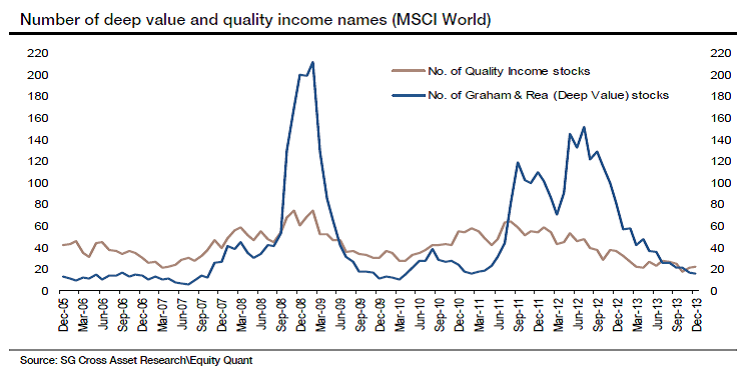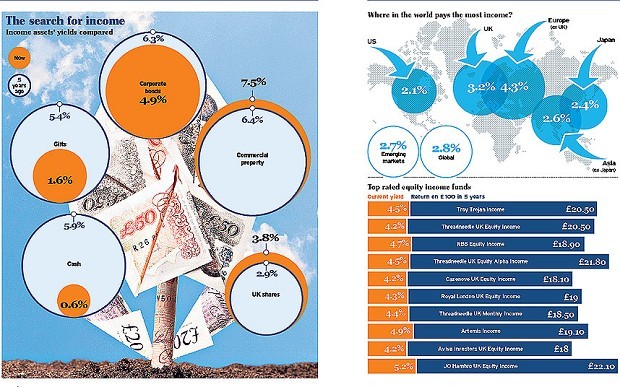Investing In Value And Income Stocks
Post on: 2 Июнь, 2015 No Comment

Investing in Value and Income Stocks
By MarketConsensus Staff. Updated | January 29, 2015 5:06 am
Investing Styles: Income Investment Vs. Growth Investment
Most investors invest in order to get a good return.
Whether you invest in equities, bonds, real estate or commodities, the end goal is usually to try and make more money than you initially invested.
In a way, its that simple! However, when investing, you should be looking at Total Return, which includes both price fluctuations as well as dividends, as a yardstick to judge whether you have met your investment objectives.
In this article, we will take a look at two popular types of investment strategies, Income investing and Growth investing, and well look at some of the key points of these two strategies that will help you determine what type of returns you should expect from your investments.
Income investing
There is a vast camp of investors, especially those in the 60+ age group or those nearing retirement, that are more concerned with receiving regular income from their investments as opposed to worrying if their stock prices have risen or fallen over the past 24-hours. Income investors would therefore define return as:
The steady and regular receipt of income from an investment, in the form of Interest, Dividends or Distributions
Regular income can come from a number of investments, including Term Deposit Certificates, Preferred Shares and Bonds. But for the purpose of our discussions, well focus our attention on dividend paying stocks as a means of income investing.
So heres what you should look for in a good dividend paying stock:
Dividend Yield: The Dividend Yield of a stock tells investors how much, in percent terms, the regular income from a stock will net you when compared to its current price. This figure is usually expressed as an annual percent. The Dividend Yield is calculated as follows:
Annual Dividend / Current stock price
A stock valued at $20 and paying an annual dividend of $1 would have a Dividend Yield of 5% (i.e. $1/$20 x 100 = 5%)
All else being equal, the higher the Dividend Yield, the more attractive a stock is as an income investment. However, be careful of stocks that have an exceptionally high (compared to its peers in the industry) Dividend Yield. For instance, underlying fundamentals of the example stock we discussed above could have driven the stocks price down to $10. If the company continues to pay a $1 annual dividend, its Dividend Yield will be an attractive 10%. Does that make it a good income investment? Not necessarily. High dividend yielding stocks usually need further analysis before jumping into them.

Dividend Growth: A stock that pays a 2% dividend year after year, for the past 20 years, might look attractive, but it might not be a true income investor friendly stock. Inflation and taxes take their toll on your investment returns, leaving you with a much reduced slice of the 2% pie. Look for companies that have a history of regularly raising their dividend payouts.
Earnings Growth: Where do companies pay their dividends from? Earnings, of course! Earnings generate cash flow that company management uses to pay distributions to shareholders. Therefore, look for companies that have a history of growing their earnings over a long period of time.
Debt to Earnings Ratio: Even if a company has steadily increasing earnings, shareholders are usually lower down the pecking order to receive returns. Bondholders and Preferred Shareholders will often receive their share of the earnings before any dividends are paid to common shareholders. Additionally, some companies have a tendency to take on huge amounts of debt, to the detriment of the company, just so they can meet their dividend obligations. To be considered as an income stock, make sure therefore that a company has a relatively low (compared to industry peers) Debt to Equity ratio. Debt to Cash Flow Ratio can also act as a proxy for this assessment.
Visit our 4 Major Valuation Ratios to Value a Stock article for information on Financial Ratios
The Income Investors bottom line
If you are depending on income from your investments, then you must ensure that:
- Company management are shareholder friendly and have shown their willingness to pay dividends
- The company is profitable over a longer term, and has the ability to maintain or increase its dividends
- The companys business model is sustainable in the long term. For instance, investing in a company that sells computer printer paper wouldnt guarantee long-term sustainability
(By: Monty R. — MarketConsensus News Contributor)














